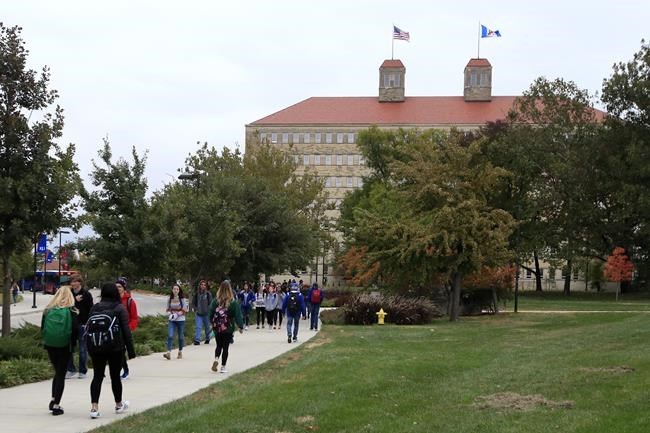TOPEKA, Kan. (AP) — Democratic Gov. Laura Kelly on Thursday vetoed that would make it harder for the lone Kansas Democrat in Congress to win reelection this year.
Republicans in the GOP-controlled Legislature are expected to try to override Kelly's veto of the measure, but if they do, the new lines are likely to be challenged in federal and possibly state court. Republicans appeared to have the two-thirds majority required to override a veto in the Senate and were close in the House.
The measure would split the state's portion of the Kansas City area into two congressional districts, costing some of the territory in her 3rd District where she performs best. The map also would home to the main University of Kansas campus, from the 2nd District of eastern Kansas and put it in the 1st District of central and western Kansas with conservative communities six or more hours away by car.
Kelly's veto message repeated Democratic legislators' criticism of the plan, arguing that it violates guidelines set by the courts and lawmakers themselves aimed at not diluting the clout of minority voters and “protecting communities of interest.”
“I am ready to work with the Legislature in a bipartisan fashion to pass a new congressional map,” Kelly said in her message. “Together, we can come to a consensus and pass a compromise that empowers all people of Kansas.”
Kelly's action comes with Republicans hoping to regain a U.S. House majority in this year's elections.
Republicans argued that Davids still can win reelection, based on voting in the 2020 elections and that they simply were following past federal court mandates for all districts to be as equal in population as possible after population shifts over the past 10 years. They also said they didn't want to split Johnson County, the state's most populous county in the Kansas City area.
Democrats had a host of criticisms that attorneys for sympathetic voters would be likely to raise in court.
The new map would reduce the percentage of minority voters in the 3rd District by moving the northern part of Wyandotte County in the Kansas City area into the 2nd District. Democrats argue that federal courts aren't likely to stand for the reduction of minority voters' influence, and Kelly said the change was made “without explanation.”
However, Republicans have argued that the split is acceptable because the percentage of minority voters would increase in the 2nd District.
Democrats also argue that all of Wyandotte County is part of the core of the Kansas City area. But Republicans note that the combined populations Johnson and Wyandotte counties exceed the ideal of 734,470 for a Kansas congressional district.
Democrats also are upset by the change for Lawrence, which would split the city from the rest of its home county and make it a far eastern tip of the 1st District. They argue that Lawrence has little in common with the rest of the 1st. Kelly also suggested that GOP lawmakers also would be “reducing the strength of communities of interest in western Kansas.”
But Republicans have argued that the change is acceptable because it would put the main University of Kansas and Kansas State University campuses into the same district.
___
Follow John Hanna on Twitter:
John Hanna, The Associated Press



